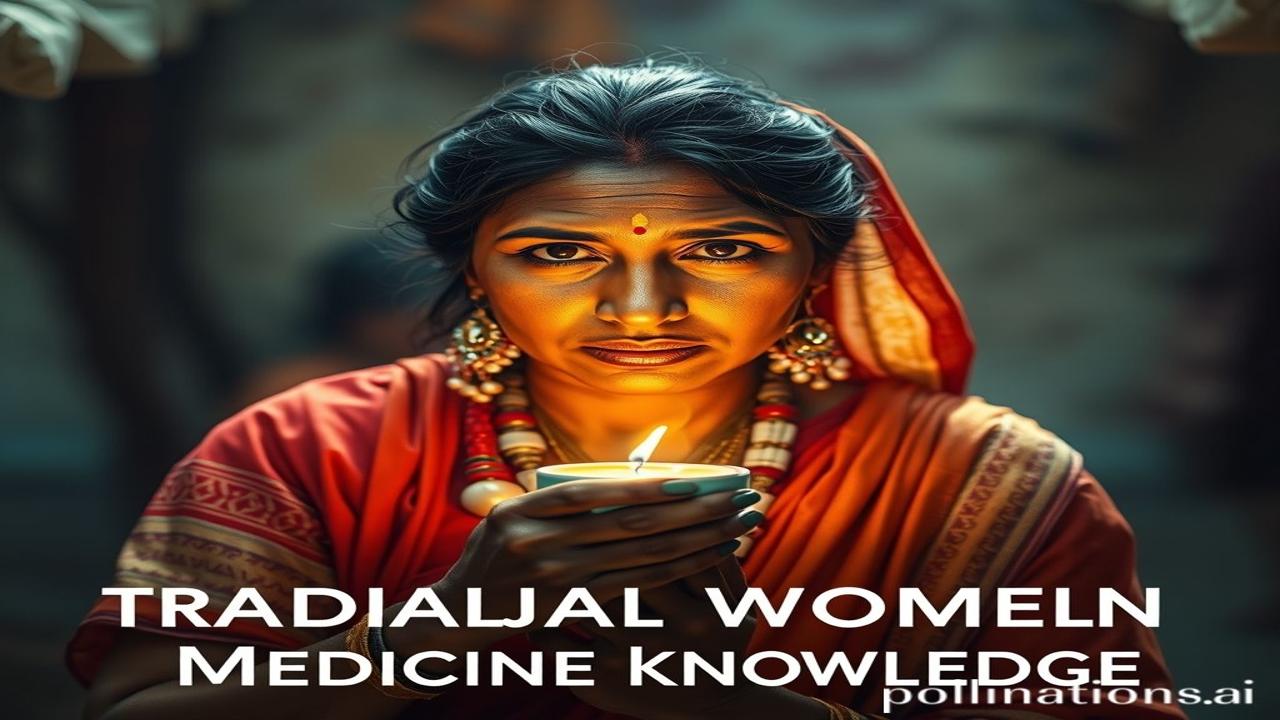Dadi Maa Ke Nuskhe: The Whispered Wisdom of Traditional Women’s Medicine
Kabhi socha hai, agar hum apni Dadi-Nani ki baatein dhyan se sunte, toh kitni health problems se bach jaate? Unki potli mein toh jaise poore jungle aur kitchen ke secrets bhare hote the! Waqt ki dhool mein chupi yeh kahani hai, un women ki jinhone generations tak apne pariwar aur communities ko heal kiya, bina modern medicine ke. Let’s rediscover this khoobsurat, albeit fading, tradition of traditional women’s medicine in India.
The Long and Winding Road of Traditional Women’s Medicine
Traditional women’s medicine, or what we can broadly call “gharelu nuskhe” and “ayurvedic practices passed down through matriarchal lines,” isn’t a new fad. It’s an ancient system of knowledge, deeply embedded in Indian culture, possibly dating back to the Indus Valley Civilization. Think of it as the original primary healthcare, especially for women and children.
This knowledge wasn’t just about treating illnesses; it was about preventative care, nutrition, and understanding the natural rhythms of the body. It was the wisdom held by mothers, grandmothers, midwives (Dai Maas), and local healers – a shakti passed on from one generation to the next, often orally, within the family or community.
This system relied heavily on herbs, spices, dietary adjustments, massage, and lifestyle changes. Each region of India had its own unique set of remedies and practices, based on the local flora and climate. The why behind its importance is simple: it was accessible, affordable, and deeply rooted in the belief that health is a holistic balance of mind, body, and spirit.
In the Heart of the Home: The Daily Life of a Vaidya Maa
Imagine a village in rural Rajasthan, circa 1800. Ma Yashoda is stirring a pot of kadha over a chulha. The air is thick with the scent of ginger, tulsi, and honey. A young woman, weakened after childbirth, sits nearby. Ma Yashoda, the village Dai Maa and keeper of traditional medical knowledge, gently massages her abdomen with warm oil infused with herbs, reciting ancient mantras.
“Beta, yeh tel tere shareer ko shakti dega, aur tere bacche ko bhi,” she says, her voice soothing and reassuring. She then prescribes a specific diet of lentils, ghee, and warming spices to aid in her recovery.
Ma Yashoda knew the secrets of the plants around her. She could identify the herbs that could alleviate pain, reduce fever, and promote healing. She knew the power of turmeric for inflammation, neem for skin infections, and ashwagandha for stress. Her knowledge was her power, and she shared it freely with the women in her community.
For rulers too, Rajvaidyas were indispensable. They were often women of immense knowledge who prescribed specific diets and therapies for queens, particularly focusing on their health during pregnancy and post-partum. They were not just healers, but also confidantes and advisors, deeply intertwined with the lives of those they served.
A Legacy That Endures: Cultural Significance Today
Even today, echoes of traditional women’s medicine resonate through Indian culture. Look closely:
- Rituals & Festivals: Many rituals associated with weddings, childbirth, and other milestones involve specific herbal preparations and dietary restrictions prescribed by family elders, often women. Haldi doodh for strength, saunf after meals for digestion – these are all remnants of this knowledge.
- Food as Medicine: The concept of “food as medicine” is deeply ingrained in Indian cooking. Spices like turmeric, ginger, garlic, and cumin are not just flavor enhancers; they are powerful medicinal agents used daily.
- Ayurveda: While Ayurveda is a formal system of medicine, its principles are often intertwined with the traditional knowledge passed down by women in families. Many remedies used at home are rooted in Ayurvedic principles.
- Bharatiyata: This inherited wisdom connects us to our roots, reinforcing a sense of Bharatiyata by drawing from the ancient reservoir of our culture.
Fun Fact Alert! Busted Myths!
Myth: Gharelu nuskhe are just old wives’ tales and are not effective.
Truth: While not all remedies are scientifically proven, many have been found to possess real medicinal properties. Research is increasingly validating the efficacy of traditional herbs and practices. Moreover, the safety and accessibility of these methods make them invaluable for basic healthcare needs, particularly in rural areas.
Aromatic Memories: A Sensory Journey
Imagine the air in Ma Yashoda’s kitchen: the earthy aroma of spices being roasted on the open fire, the sweet fragrance of ghee simmering in a clay pot, the pungent smell of freshly ground herbs. The walls of her home, made of mud and straw, felt cool and soothing to the touch. The sounds of women singing folk songs while preparing medicines filled the air, creating a symphony of healing and community.
A Lasting Whisper: The Wisdom of Our Ancestors
“Arogyam paramam bhagyam, swasthyam sarvartha sadhanam.”
(Health is the ultimate fortune; good health is the means to everything.)
Let us remember and cherish the wisdom of our ancestors, especially the women who safeguarded the health of our families and communities with their knowledge and compassion. Their legacy continues to inspire and guide us towards a healthier and more holistic way of living. Let’s not let this valuable dharohar fade away. It’s a part of who we are, a vibrant thread in the rich tapestry of Indian culture.
